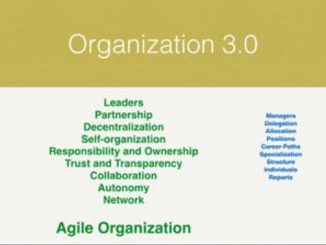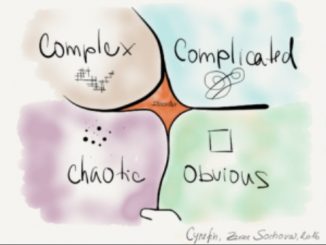Agile change and transformation
To achieve true business agility, leaders must not only grow and support self-reliant, cross-functional, self-organizing Scrum teams, they must also change the way their organizations fund and oversee their agile initiatives. They must believe in feedback and allow that feedback to work. However, old measures like “on time” and “within budget” are not useful when markets and customers are constantly changing, potentially resulting in delivering great solutions to problems that no longer exist.
How can you achieve a modern Agile organization? Starting from the description of the version 1.0 and 2.0 of organizations, Zuzi Šochová explains how to transition to a new Agile work organization that relies team and communication more than on individuals.
The change required by Agile and Scrum isn’t simple. This talk presents the tools provided for six teams and they were enabled to build the foundations for safe continuous learning themselves. Most people in agile and lean are involved in change somehow.
When an approach or a technology reach the hype level, then every IT solutions provider include it in the description of what it offers. This is today the case for Agile and Scrum in software development. This is why the Defense Innovation Board (DIB) has worked on a document to help US Department of Defense (DoD) agencies to detect Agile bullshit.
Projects have been the main working mode of software development activities since the beginning of computers. According to Allan Kelly, it is however not the best mode to develop software. He fosters the #noproject movement to fight project myopia that he defines as the “belief that the project model is the only way of managing business change and development.”
There’s some weird stuff going on in the name of “agile” nowadays.Too many pretty promises, eager exaggerations, and misguided misapplications of misunderstood premises make for troubling times. So what is the future of agile? We want to share with you how agile fails and how agile succeeds. The key to the future of agile is being thoughtful, realistic, and above all skeptical.
As organizations transition to an Agile approach, the management and leadership styles must also change to adapt themselves to the new values and behaviors. In this article, Zuzana “Zuzi” Šochová explains how an Agile Leadership concept can help leaders to be effective in an Agile organization.








